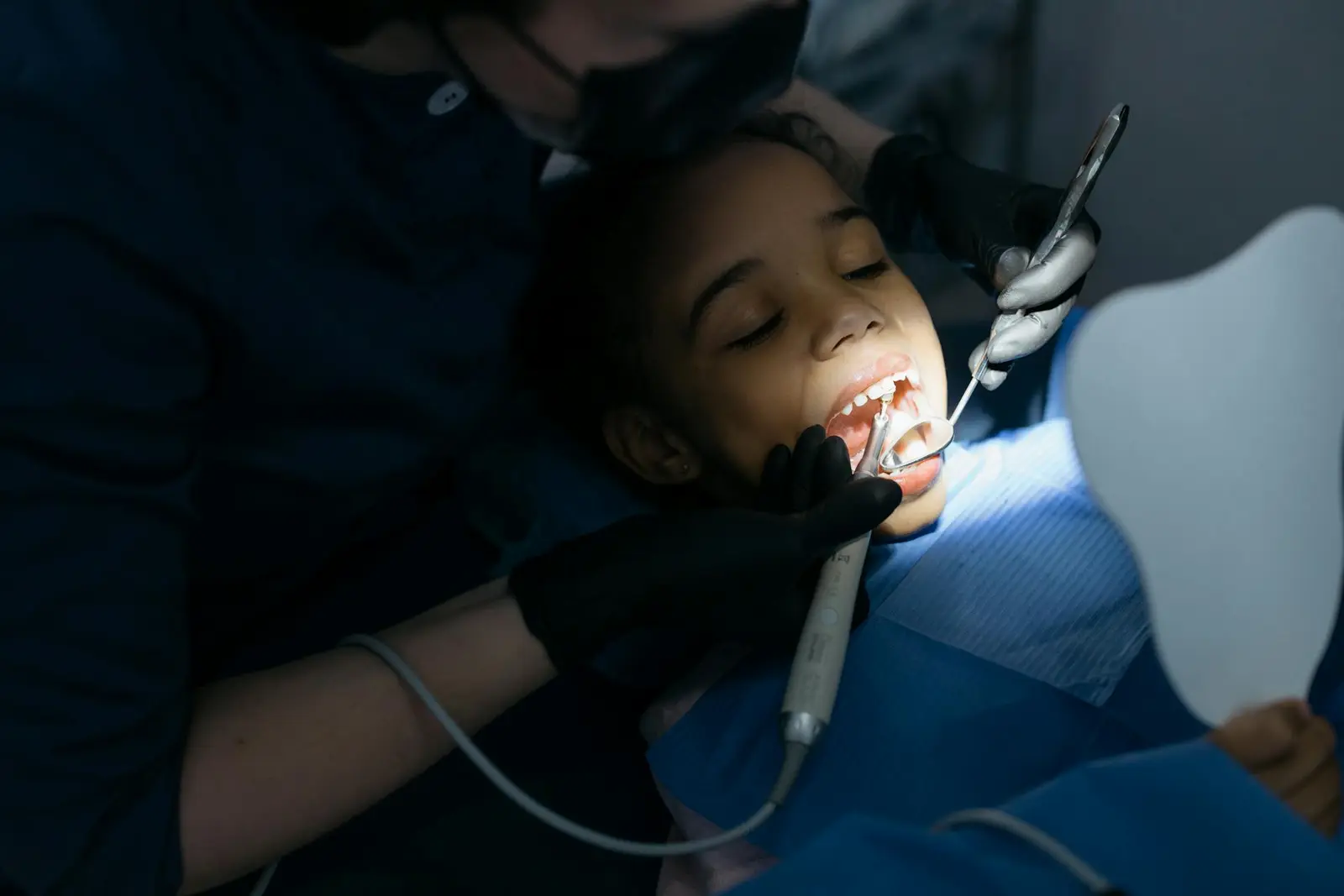Orthodontics
Table of Contents
Key Points
- Early orthodontic treatment refers to orthodontic care for patients around the age of seven.
- An initial orthodontic evaluation will include an intraoral examination as well as x-rays.
- Early orthodontic treatment can offer numerous benefits, including cost savings, more efficient treatment, and improved overall outcomes.
- Early orthodontic intervention might include tooth extraction, palatal expanders, or early interceptive braces.
- Talking openly with your child about their orthodontic treatment can alleviate fears or anxiety, especially prior to the first appointment.
When should a child see an orthodontist? Experts agree that all kids should see an orthodontist before their seventh birthday. Some children may need orthodontic care before the age of seven. An initial orthodontic evaluation before the age of seven can help determine any urgent oral health issues and allow the orthodontist to begin developing a treatment plan for future care.
What Does Early Treatment Mean?
According to the American Association of Orthodontists, a child should see an orthodontist for an initial evaluation no later than age seven. [1] If orthodontic issues are suspected or observed, the child should see an orthodontist right away. The longer you wait to address oral health issues, the more complicated, invasive, and expensive the treatment may be. The sooner these issues are addressed, the better the potential outcomes.
Why Is Early Evaluation Important?
You may have heard that the best time for orthodontic intervention is after all of the child’s permanent teeth have come in. This may be true in most cases. Still, early treatment could be important if the child has a condition that is likely to progress and become worse if not treated immediately. Since this situation occurs in some children, it’s important to get an early evaluation.
Orthodontic Conditions that Require Early Treatment
During an initial visit, sometimes referred to as a consultation, your orthodontist will look for any conditions that require early treatment (i.e., when a child still has baby teeth). Some of these conditions include:
- Underbite
- Crossbites
- Thumb-sucking that is impacting jaw growth
- Open bite (i.e., when front teeth don’t meet)
- Excessively crowded teeth
- Missing teeth
- Too many teeth
- Large spaces between teeth
What Does Early Orthodontic Treatment Entail?
The initial orthodontic evaluation will include a comprehensive assessment of your child’s oral health. This will require an intraoral exam as well as panoramic X-rays that allow the orthodontist to look below the surface of the teeth. An X-ray will show any missing teeth, extra teeth, or impacted teeth. [2]
After the initial screening, the orthodontist may review the results with parents and present treatment options. Sometimes, the orthodontist may conclude that the child doesn’t require treatment at the time of the consultation. In this case, they may recommend periodic check-ups to look for any emerging issues and to monitor how permanent teeth are coming in.
If any orthodontic problems are identified during the initial assessment, your orthodontist may discuss treatment options with you. Sometimes, these problems need to be addressed right away, while other times, you might be able to wait until your child is a bit older. Every child’s situation is different.
Early Orthodontic Treatment Plans
No one’s orthodontic plan is exactly the same. An early orthodontic treatment plan can include various treatments. Treatment may depend on the results of an orthodontic evaluation and the preferences of the orthodontist. Some common types of early orthodontic intervention include:
- Tooth extraction
- Orthodontic appliance (e.g., retainer, headgear)
- Palatal expander
- Early interceptive braces
Benefits of Early Orthodontic Treatment
There could be many benefits of early treatment, and these could depend on your child’s specific situation. Examples of potential benefits include:
- Better orthodontic outcomes
- Shorter treatment time
- Avoidance of more expensive treatments in the future
- Possibly avoiding braces or other orthodontic appliances during the teen years
Talking to Your Child About Early Orthodontic Care
Young children might be scared or nervous about seeing an orthodontist. These are normal feelings. Parents can help their children feel more comfortable by communicating with them about what to expect. Here are some strategies you can use to prepare your child for their first orthodontic appointment:
- Talk to your child about the need for orthodontic care.
- Remind them that getting braces doesn’t hurt and that the orthodontist will do everything they can to ensure their comfort during orthodontic treatment.
- Listen patiently to your child’s concerns and validate their feelings. Even grown-ups sometimes experience anxiety when going to the dentist or orthodontist.
- Answer any questions your child may have about the appointment. The more they know, the less anxious they are likely to be.
Seeking Early Orthodontic Care
Early orthodontic treatment can be important, not just for your child’s oral health, but also to ensure their orthodontic plan is as efficient and cost-effective as possible. If your child is seven years old or older, or if you’ve noticed signs that they might need orthodontic care, consider early intervention. Kunik Orthodontics offers all ages orthodontic care. A brighter smile is right around the corner.
Frequently Asked Questions About Early Orthodontic Treatment
Below are some of the most frequently asked questions regarding early orthodontic treatment
How early is too early for orthodontics?
Orthodontists recommend beginning treatment around age seven. Braces aren’t typically recommended until the age of 10, but this can vary.
What causes orthodontic problems?
Orthodontic problems can be caused by a variety of factors, including genetics, early or late loss of baby teeth, and oral habits such as thumb-sucking, as well as mouth or facial injuries. Treating complex orthodontic issues may require a multi-stage or hybrid orthodontic intervention to ensure the best possible outcome.
What are some signs that my child needs early orthodontic intervention?
Some signs that your child might benefit from early orthodontic intervention include thumb-sucking after the age of five, mouth breathing, trouble chewing, facial imbalances, or jaw clicking or shifting.
Get The Smile Of Your Dreams With Austin's Best Orthodontics Team!
We offer orthodontic treatments plans for all ages. Schedule your free consultation now to learn about your options!The Kunik Orthodontics Editorial Guidelines
We prioritize reliability and accuracy by upholding strict editorial standards.
Our commitment to thorough vetting ensures you receive up-to-date and reliable information across every topic in our library. This commitment is driven by our mission to provide superior care and knowledge to all of our orthodontic clients.
By maintaining high standards, we strive to deliver consistent and trustworthy information, offering comprehensive orthodontic care and knowledge to our clients, their families, and anyone searching for accurate information.
Read More About Our ProcessSources
[1] Baum, A. (2024, February 7). Kickstarting a lifetime of beautiful smiles: The benefits of early treatment. American Association of Orthodontists. https://aaoinfo.org/whats-trending/is-there-a-benefit-to-early-treatment/
[2] Baum, A. (2024b, December 12). Early orthodontic care at age 7: A path to cost-effective treatment. American Association of Orthodontists. https://aaoinfo.org/whats-trending/early-orthodontic-care-may-help-you-avoid-costly-treatments/
Amanda Stevens is a highly respected figure in the field of medical content writing. Amanda earned a Bachelor of Science degree in Social Work from Purdue University, graduating Magna Cum Laude, which serves as a strong educational foundation for her contributions.

